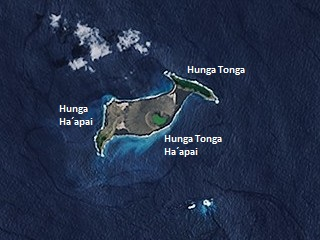- Dr. Orna
- Feb 8, 2022
- 3 min read
Jonathan lives on St. Helena island .
He is a giant tortoise.
He is very old.
Jonathan is not just the oldest giant tortoise, but probably the oldest living land animal on the planet!

So how old is Jonathan?
Jonathan does not have a birth certificate, so we can not be precise. It is believed that he is about 190 years old!! WOW!!
He was brought to St. Helena Island as a gift in 1882. As he was already fully grown upon arrival, he should have been at least 50 years old. That means he might have hatched in 1832 (or earlier), so this year he will celebrate his 190th birthday.

Jonathan (left) with another giant tortoise (1886) (Wikipedia)
About Giant Tortoises
They are Reptiles
Reptiles are vertebrates - they have backbones. They are cold-blooded animals whos' body temperature is raised by lying in the sun and lowering it by crawling into the shade. They lay eggs. Giant tortoise eggs are about the size of a tennis ball.
In the reptiles group you can find snakes, lizards, alligators, crocodiles, turtles and tortoises.
They are Herbivores
Herbivores are animals that only eat plants. Herbivores (such as rabbits, giraffes, and goats) have teeth that are adapted to grind vegetables. Many animals that eat fruits and leaves sometimes eat other parts of plants like its roots and seeds.
*Animals that eat only meat are called carnivores
*Animals that eat both plants and meat are called omnivores.
They are land animals
Land animals are animals that live mainly or entirely on land (like cats, dogs, ants, spiders and more).
*Aquatic animals live mainly or entirely in the water (like fish, lobsters, octopuses and more)
*Amphibians live their first part of their life in the water and the second part on land (like frogs, salamanders and toads)
They are big
Giant tortoises can weigh more than 900 pounds and can grow to be 4-5 ft. long.
More about giant tortoises
They are very slow and spend lots of time basking in the sun
They compete with each other by extending their necks out of their shells to see which of them can extend it the highest
A baby giant tortoise is called a hatchling
they are gentle creatures but can bite if feel threatened
No - the grooves on their shells cannot be used to tell how old they are.
They are considered endangered species
They are very powerful and can smash small trees
Jonathan loves having his neck stroked

Jonathan loves bananas, cabbage and carrots.
Here he is in April 2021 (Wikipedia):

What happened in the world during his life?
When England's Queen Elizabeth great-grandmother Queen Victoria became the queen in 1837, Jonathan was already 5 years old
The first telephone was invented in 1849 - when Jonathan was 17 years old
The first car was invented in 1886 - when Jonathan was 54 years old
The Wright brothers had invented the first successful airplane in 1903 - when Jonathan was 71 years old
The first parking meter was invented in 1932 - when Jonathan was 100 years old
The first men landed on the moon in 1969 - when Jonathan was 137 years old
The first personal computer was invented in 1976 - when Jonathan was 144 years old'
The internet was invented in 1983 - when Jonathan was 151 years old
Google was founded in 1998 - when Jonathan was 166 years old
Jonathan the tortoise already saw 40 US presidents:
Andrew Jackson 1829-1837
Martin Van Buren 1837-1841
William Henry Harrison 1841-1841 (died in office)
John Tyler 1841-1845
James K. Polk 1845-1849
Zachary Taylor 1849-1850
Millard Fillmore 1850-1853
Franklin Pierce 1853-1857
James Buchanan 1857-1861
Abraham Lincoln 1861-1865
Andrew Johnson 1865-1869
Ulysses S. Grant 1869-1877
Rutherford B. Hayes 1877-1881
James A. Garfield 1881-(Died in Office)
Chester A. Arthur 1881-1885
Grover Cleveland 1885-1889
Benjamin Harrison 1889-1893
Grover Cleveland 1893-1897
William McKinley 1897-1901
Theodore Roosevelt 1901-1909
William Howard Taft 1909-1913
Woodrow Wilson 1913-1921
Warren G. Harding 1921-1923
Calvin Coolidge 1923-1929
Herbert Hoover 1929-1933
Franklin D. Roosevelt 1933-1945
Harry S. Truman 1945-1953
Dwight D. Eisenhower 1953-1961
John F. Kennedy 1961-1963
Lyndon B. Johnson 1963-1969
Richard M. Nixon 1969-1974
Gerald R. Ford 1974-1977
Jimmy Carter 1977-1981
Ronald Reagan 1981-1989
George Bush 1989-1993
Bill Clinton 1993-2001
George W. Bush 2001-2009
Barack Obama 2009-2017
Donald Trump 2017-2021
Joe Biden 2021-present






























